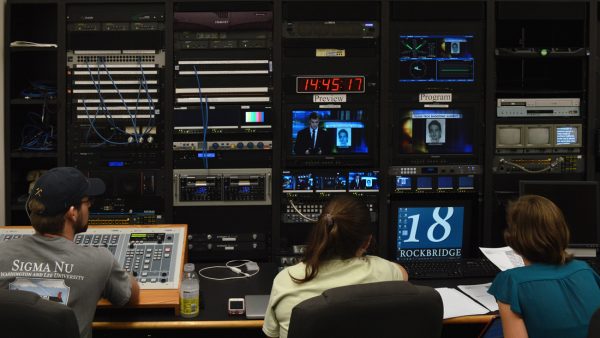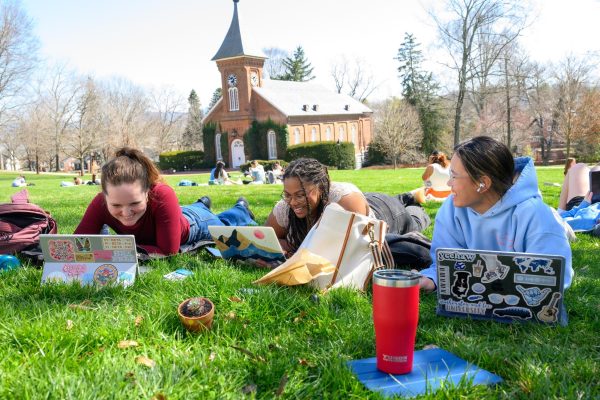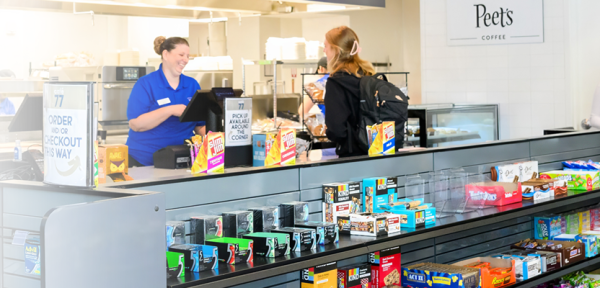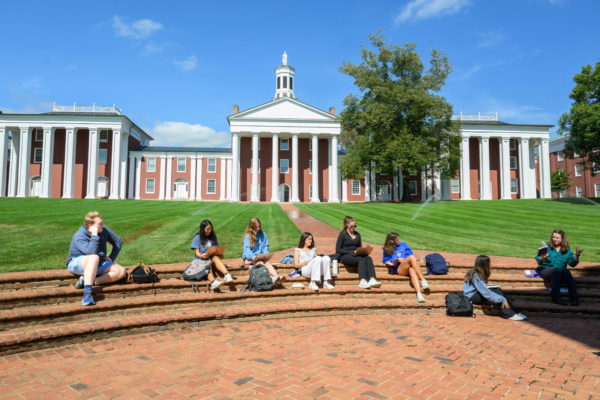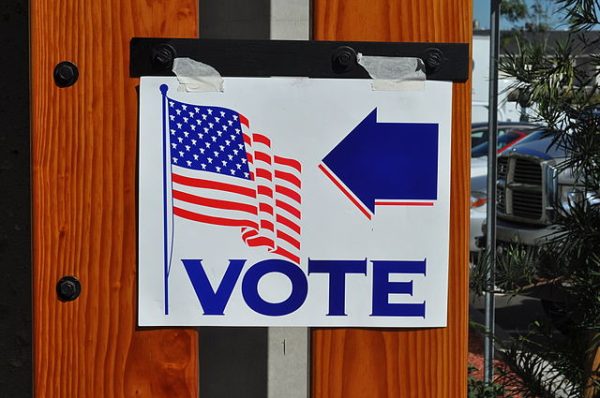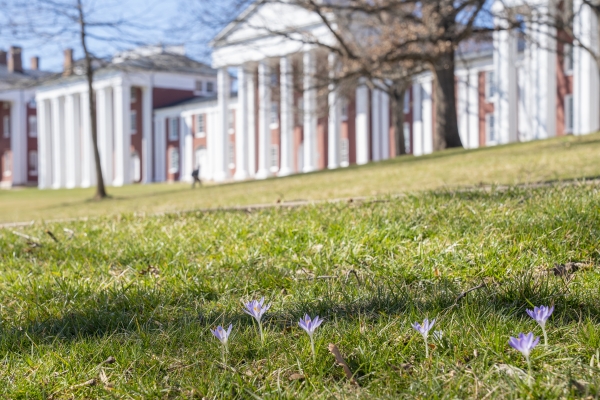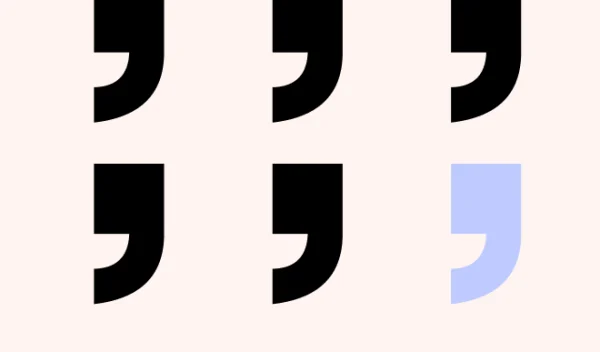Don’t go virtual
March 2020: Pandemic, Zoom, virtual learning; our educational experience turned upside down.
January 5, 2022
Take a minute and think back to when you or someone you know had to learn virtually. It may have been only the spring of 2020 or even last school year. But remember the problems and struggles students, myself included, faced. With the introduction of vaccines in addition to a mask and vaccine mandate at W&L, it appeared as though this school year might finally be virtual-free and the closest resemblance of a “normal” school year in a while. And, for the most part, the fall semester was as “normal” as we probably could have hoped.
Yet, with the rise of the new and more transmissible Omicron variant, it appears that things may be taking a turn for the worse. As the Omicron variant has taken hold of the globe, many of W&L’s peer institutions have opted for remote and virtual learning for the start of the second semester for now. But, let’s not be naive, if the Omicron variant remains the dominant strain of COVID-19, institutions are most likely going to remain virtual for the foreseeable future.
Overkill, don’t you think?
Let me be clear, I am certainly not saying we should not take this new variant lightly. The Omicron variant appears to be more transmissible, however, on the bright side, it seems to be less severe, especially if one is fully vaccinated and boosted. Cases caused by the variant are also predicted to peak in mid-February, so by no means are we close to being free from COVID-19’s grasp.
W&L understands this too and has rightly mandated the COVID-19 vaccine and recently mandated the booster shot for the W&L community after previously recommending it. Moreso, W&L is continuing to mandate mask-wearing, which is one of the best preventive measures to stop the spread of COVID-19. Even more, W&L is providing students with N95 and KN95 masks, which have been shown to be most effective against the Omicron variant.. W&L administration is taking the Omicron variant seriously and appears to be doing everything in its power to ensure that students have in-person learning, something that does not appear to be happening at peer institutions.
However, who’s to say that W&L will not opt for virtual learning? What is stopping them from opting for virtual for the start of the semester like Duke and Yale? Of course, W&L is smaller in population and surrounded by a less populated area than Durham or New Haven, but that does not mean a surge of cases couldn’t plague Lexington City or Rockbridge County.
But this chance of virtual learning poses numerous problems to students’ learning and mental health, as well as the simple practicality and downright fairness of such a decision.
Also, for the cost many students are paying to attend W&L, it is simply unjust to have virtual learning and still charge the same price. Would you not be irate paying upwards of $80,000 for Zoom classes run by professors, some of which still lack proficiency with the video platforms?
Moreover, if classes go virtual, students and faculty miss out on the important connections built through in-person learning. Those before-class conversations or after-class discussions and being able to drop by a professor’s office and talk are the hallmarks of an in-person educational experience. In-person learning opens avenues for genuine and unexpected connections along with the simple ease of accessibility to interact with one another that cannot be found through a computer screen. Through these small connections, professors connect to students more easily and vice versa while students develop common interests with classmates and make new friends, bolstering their mental health. Simply put, online learning is not even close to the classroom experience.
We all know that virtual and remote learning has left a scourge that will last long after this pandemic is finally over. Study after study shows that social and emotional development has been stymied and feelings of isolation and loneliness have been exacerbated. With virtual classes, students can become apathetic and disconnect from the content or even the class altogether. It is hard to express the real mental value of getting up, getting dressed and going to class in person; it makes you more alert, engaged, and excited to learn.
Striking spikes in the diagnoses of depression, eating disorders and other life-altering conditions have been partially caused by the lack of connection to others especially in a learning environment, unable to live life as normally as possible because of the pandemic. A Boston University study, conducted by questioning students nationwide, found that at least half of all college students in 2020 suffered from depression and/or anxiety. The study also revealed that 83% of students said their mental health had negatively impacted their academic performance within the past month and that due to virtual learning, two-thirds of college students said they were struggling with loneliness and feeling isolated. These are all statistics that are at an all-time high, which further serves to reflect the toll virtual learning takes on students.
While there are certainly a host of other factors that have caused students to suffer from mental challenges, I can personally say that when school went virtual, I felt disconnected from many of my peers and often felt lonely. Switching to virtual learning again could very likely result in many students slipping into depression, some may decide to move back home, and some may even quit school due to the unpleasant circumstances.
Moreso, when expectations of engagement stay the same for virtual learning as if one was in-person it ingrains a feeling that one is not trying hard enough. The fact remains that virtual learning poses unique challenges for students who learn and think differently. Numerous students struggle to keep focus and are often distracted. Behaviors like fidgeting, turning off one’s camera or moving around during a virtual class can look like a student is not being engaged, but for some, it is what they have to do to be able to participate. I am a prime example. I often cannot sit still in class and move around all the time at my desk, but this is how I do not become distracted by every other thing in the room beside the content I am engaging with.
It is central to a liberal arts curriculum to have in-person classes. They are best suited for discussion of ideas, hands-on learning and personal connection. These traits that hallmark a liberal arts education are difficult to forge through a screen. Further, do you really want someone graduating with a degree in a STEM field to be, for instance, building a bridge without hands-on experience or potentially developing pharmaceutical products without stepping foot in a chemical lab? I certainly wouldn’t. The greatness of W&L is it’s small student body that allows students to have access to all the hands-on experiences we could hope for. With virtual learning, these unique and extraordinary opportunities of learning, that we are paying for too, are stolen from us.
Now, of course, in-person learning also has its own unique challenges. But they are challenges students have dealt with for much of their educational career, not ones that have arisen in the past two years. But we know how, and have shown how, we can deal with the unprecedented challenges caused by this pandemic. We did it this past semester with the Delta variant, and it was supremely successful. W&L has implemented almost every possible measure to prevent the spread of the virus recommended by the CDC: mandating vaccines and boosters, supplying N95 and KN95 masks, limiting social gatherings and social distancing. And, with such a small student body, it is not as hard to enforce policies that keep us safe.
Students, faculty and staff must do everything in our power to ensure that we stay in person, and it seems as though we are. But the responsibility also lies on all readers, not just those situated in the Lexington community. Please, I implore you, get vaccinated and wear a mask. I understand you may believe it is your right to not get vaccinated and may be tired of wearing a mask, but for the sake of all students, your future leaders, please do. If we want the leaders of the future to be best equipped to serve everyone, take the measures that help to ensure that they learn in the best possible environment they can.
W&L is ideally suited to stay in person with a small student population, vaccine mandates and required masking. If a surge of cases did occur, W&L has the testing capacity and quarantine capacity to isolate individuals while enabling the rest to attend class. Simply put, virtual learning robs students of the education they are paying for and the breadth of opportunities that in-person learning provides.



